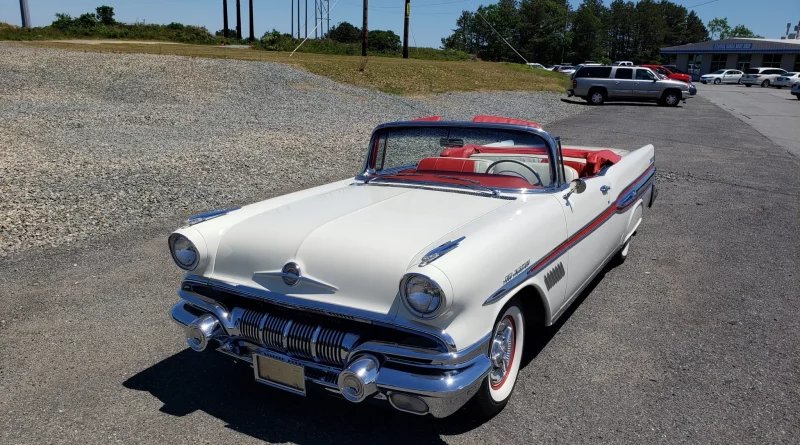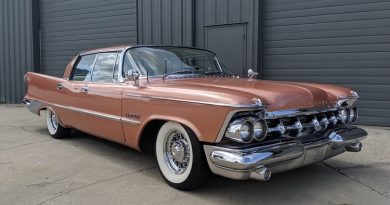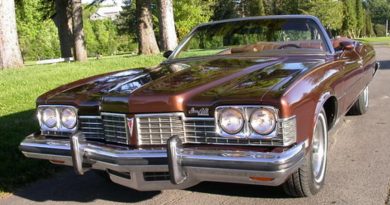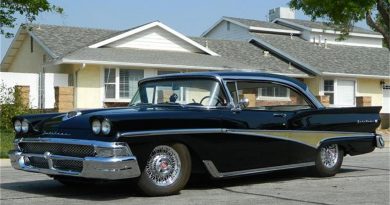1957 Pontiac Bonneville Convertible
For the first time since the 1930s, gone was the trademark “Silver Streak” hood trim giving Pontiacs a much cleaner look. Pontiac general manager Semon E. “Bunkie” Knudsen likened them to suspenders and ordered them gone immediately after taking over the Pontiac division of General Motors. It was Knudsen who coined the phrase “You can sell an old man a young man’s car, but you can’t sell a young man an old man’s car.” The division’s sales soared under his tutelage.

The Pontiac Bonneville is an automobile built by Pontiac from 1957 until 2005. Bonnevilles were full-sized, with the exception of a brief period of mid-size between 1982 and 1986. The brand was introduced as a limited production performance convertible during the 1957 model year. The Bonneville (known as the Parisienne in Canada until 1981), and its platform partner, the Grand Ville, are some of the largest Pontiacs ever built; in station wagon body styles they reached just over 230 inches (5.8 m) long, and at 5,000 pounds (2,300 kg) and more were also some of the heaviest cars produced at the time.
The name was taken from the Bonneville Salt Flats in Utah, the site of much early auto racing and most of the world’s land speed record runs, which was named in turn after U.S. Army officer Benjamin Bonneville.
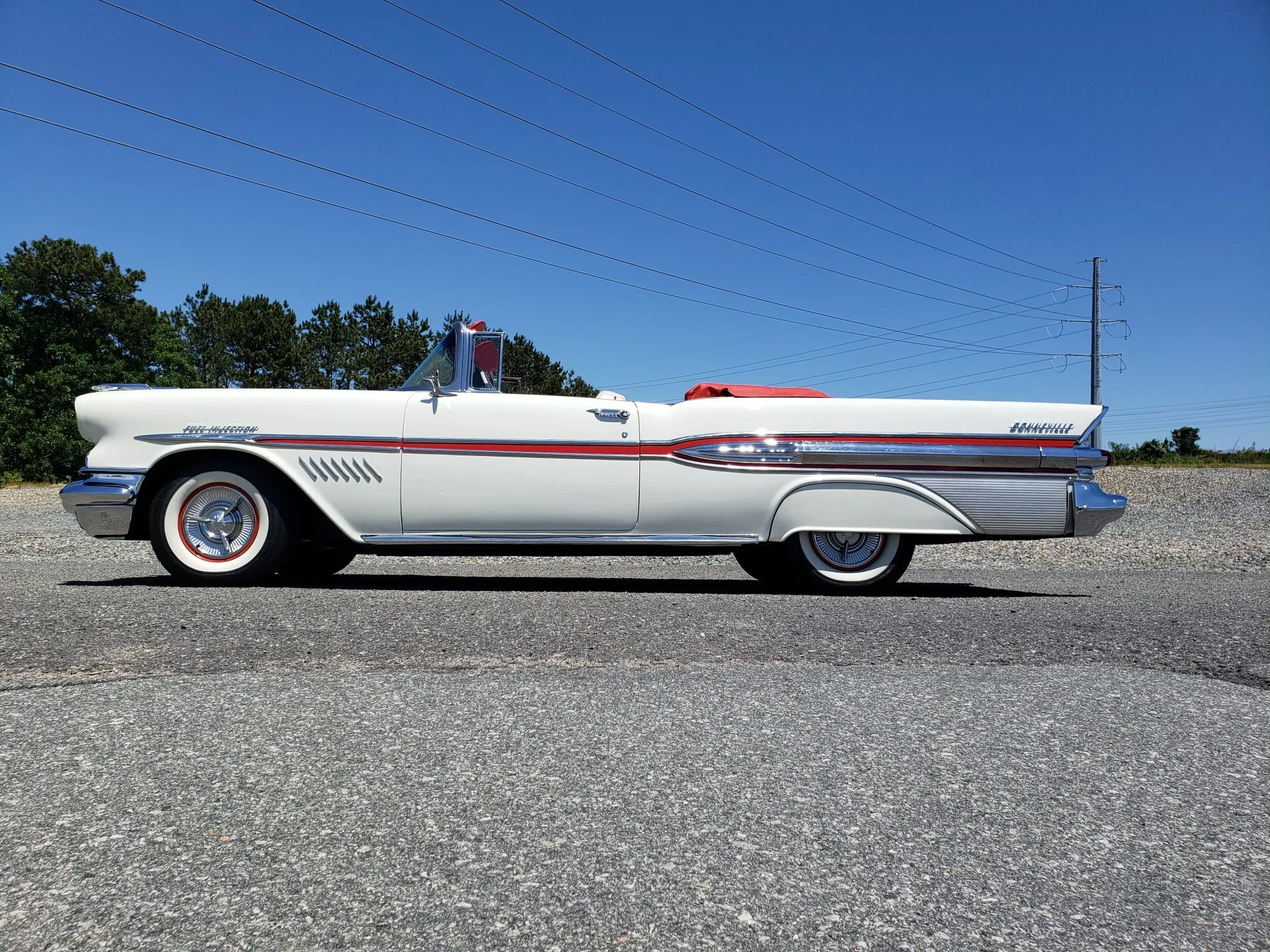
This 1957 Pontiac Bonneville is one of approximately 630 convertibles built during the first year of production and is finished in Kenya Ivory with red side spears over a red and white interior. Power is supplied by a fuel-injected 347ci V8 paired with a Hydramatic four-speed automatic transmission, and equipment includes a power-folding white soft top, electric windows, a power-adjustable driver’s seat, power steering, a push-button Wonderbar AM radio, and rear fender skirts.

The exterior is finished in Kenya Ivory with red side spears and was repainted some time during previous ownership. Exterior features include a power-folding white soft top, a retractable antenna, fuel injection badging, and rear fender skirts.

Red-painted 14” steel wheels feature chrome covers and are mounted with 225/75 Coker Classic wide whitewall tires.
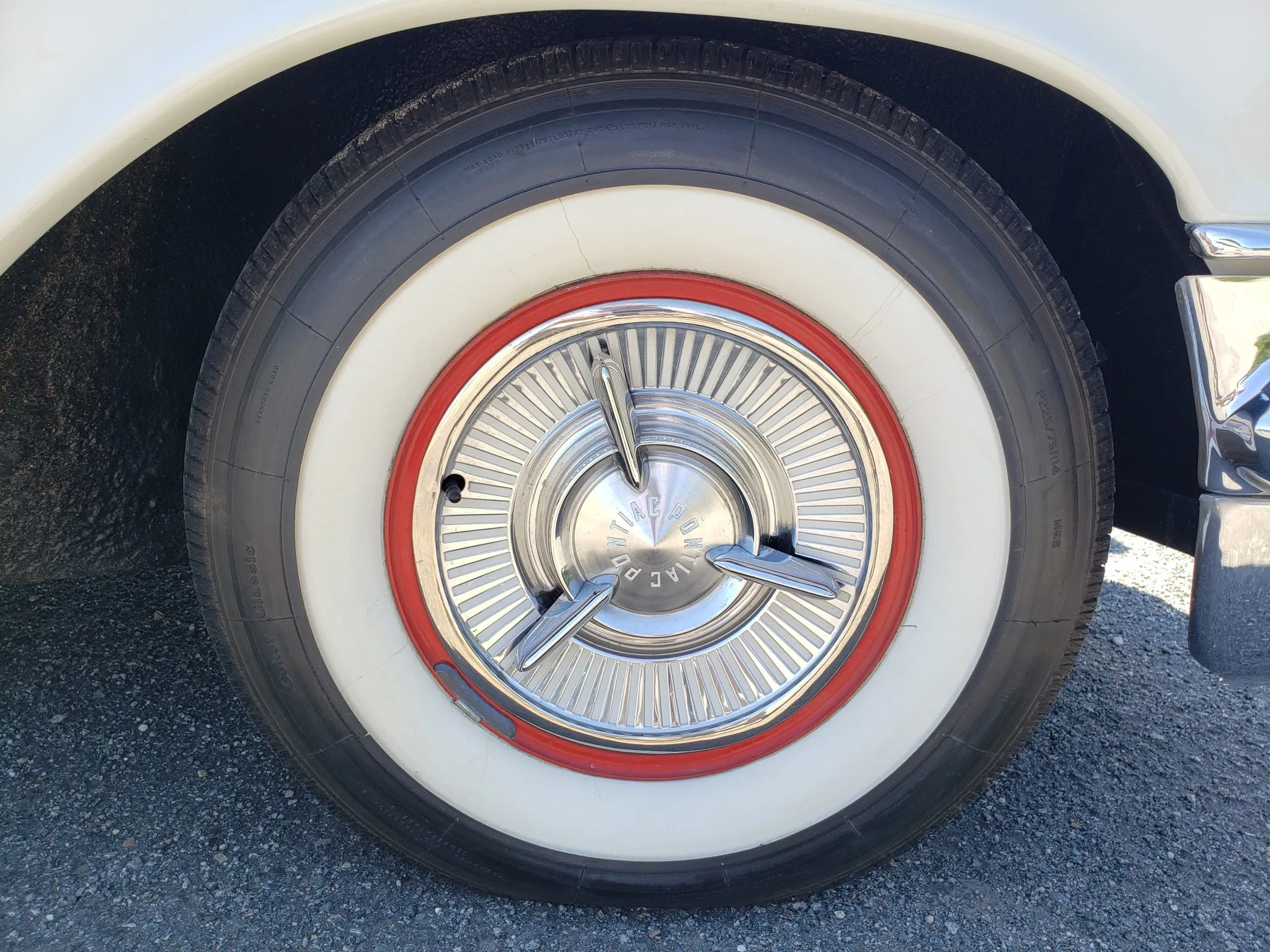
The cabin features seats trimmed in red and white vinyl with matching door panels and red carpets lined with black rubber mats. Amenities include a power-adjustable driver’s seat, power steering, electric windows, and a Wonderbar push-button AM radio.A white two-spoke steering wheel with a chrome horn ring shows signs of cracking and frames a horizontal 120-mph speedometer along with auxiliary gauges for battery charge, coolant temperature, fuel level, and oil pressure.
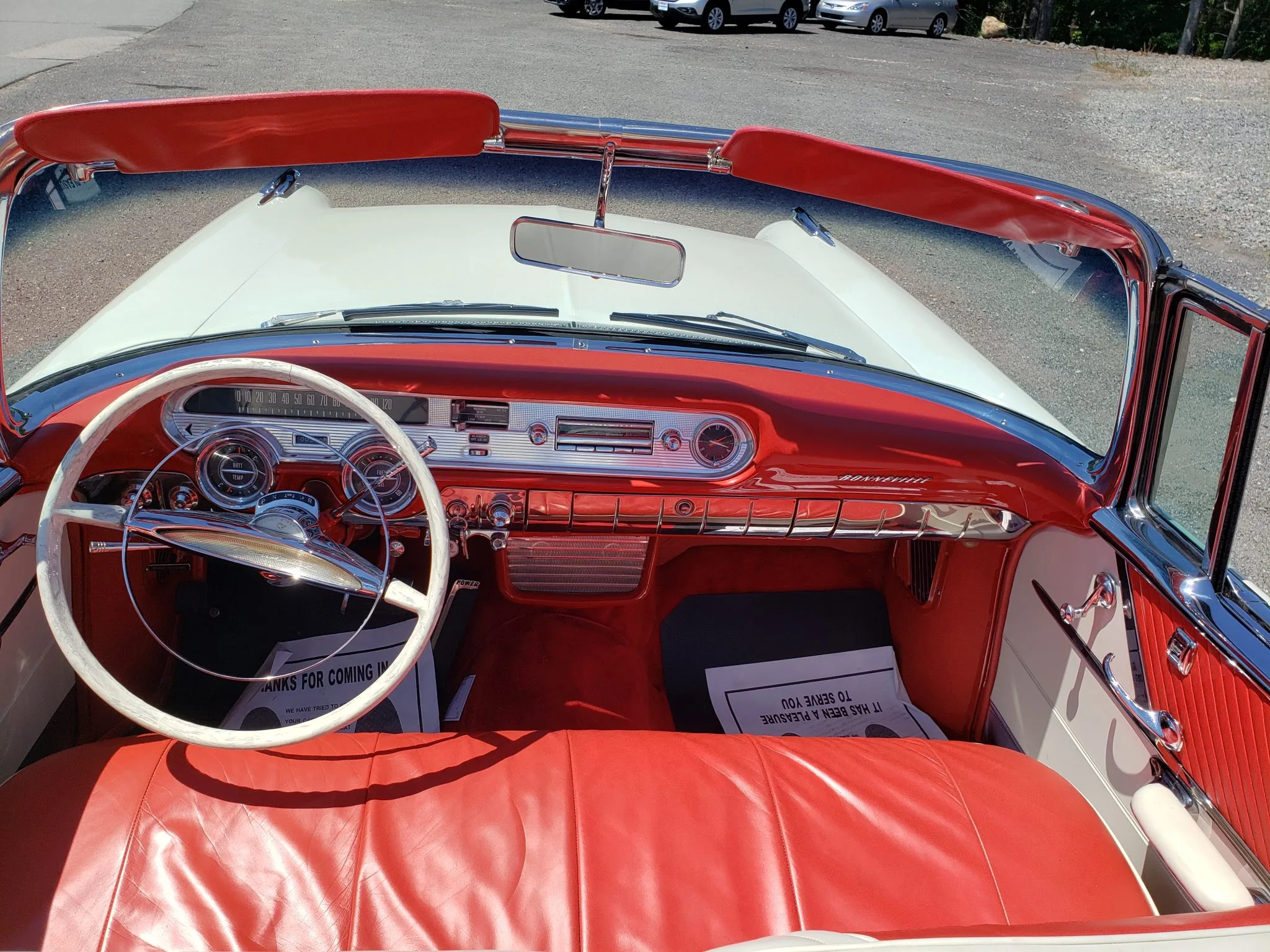
In the mid-1950s, many regarded Pontiac as a producer of reliable yet mundane family cars. Pontiac dominated the NASCAR circuit for 1957 and helped coin the phrase, “Race on Sunday. Sell on Monday.”


